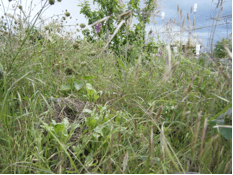We would like to welcome our new growers, who have taken on a plot this year. Unless you are very lucky, your plot will be untidy and overgrown, and you are probably wondering how you’ll ever clear it. And you may not have had much experience with growing vegetables, and you feel overwhelmed with how much information you need to take in.
Where do you start?
It depends what time of year you get your plot. Those who got to the top of the waiting list early in the year have the advantage of starting to clear their plots before the weeds got going, and have had some time to plan what they’d like to grow and clear some ground. But for those who have only just got their plot the task can be daunting.
How do you deal with this?
One way to approach it is to work on a bit at a time. Chop the heads off any flowering weeds to prevent them setting seed, and dispose of the weeds either in the green manure bin at the local tip in Mountsorrel or compost them. If you can get a heap really hot, which involves having plenty of weeds and a means of keeping them in one place, such as a compost bin or by covering with black plastic or a piece of carpet, you can get the weeds to compost relatively quickly.
Alternatively, you could put them in a black Dalek style bin and wait at least a couple of years. Then cover any ground you’re not working with something that will exclude the light to stop the weeds growing, such as thick cardboard (bike shops are a good source) or Mypex, a breathable black cover. Both will need to be well weighted down, as our site is surprisingly exposed and it gets very windy at times.
Then work on a small part of your plot at a time, digging up the weeds and covering any ground you’re not going to use right away. Don’t be tempted to use a rotovator, as this will chop up the perennial weeds and they will resprout from each fragment. Chip away at it, and you will get your plot cleared, even if it doesn’t feel like it at first!



